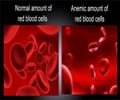Acute oral toxicity of nanoscale zinc powder has been described, resulting in induce severe renal damage and anemia.
Zinc finds wide use in brass, bronze, die casting metal, alloys, rubber, and paints, etc. In recent years, nanoscale metal powders, because of their unique properties, are being widely used in the traditional industries, such as dyes, paints, medical diagnosis, sunscreens and cosmetics. Nano Zn powder is used as highly reactive catalyst in organic hydrogen reaction, automobile tail gas disposal, environmental protection, paints, pigment, metallurgy additives.
Although zinc is an essential metal needed by mammals and commonly found in nutritional supplements, acute, high-dose oral exposure to zinc and its compounds generally results in gastrointestinal damage, with symptoms including nausea, vomiting, abdominal cramps, and diarrhea. According to the U.S. Department of Health and Human Services, 2003, ingesting high levels of zinc for several months may cause anemia, pancreas damage, and decrease the level of HDL- cholesterol.Recently a study, to be published in Toxicology Letters, (available online 13 September 2005), was conducted in China to evaluate the acute toxicity of oral exposure to nanoscale zinc powder in mice.
The healthy adult male and female mice were gastrointestinally administered with two size particles, nanoscale zinc (N-Zn) and microscale zinc (M-Zn) powder, while one group mice treated with sodium carboxy methyl cellulose was used as the control.
The symptoms and mortality after zinc powder treatment were recorded. The effects of particles on the blood-element, the serum biochemical level and the blood coagulation were studied after 2 weeks of administration.
In the experiment, severe symptoms of lethargy, vomiting, and diarrhea were observed in the mice after an acute toxic dose oral administration of N-Zn powders. The N-Zn mice exhibit significant growth retardation compared with the M-Zn and the control mice in the first 3 days after treatment. Two deaths caused by the N-Zn administration indicated that the N-Zn was probably easily causing intestinal obstruction than the M-Zn particles.
Since nanoscale particles have large specific surface area, it is found that their biological effects are mainly dependent on their surface area rather than particle mass. The authors concluded that N-Zn could induce heavy renal damage and anemia. However, they suggest that further research upon different exposure routes, especially inhalation exposure is required and long-term low level effect caused by nanoscale materials is now carried out in their laboratory.











